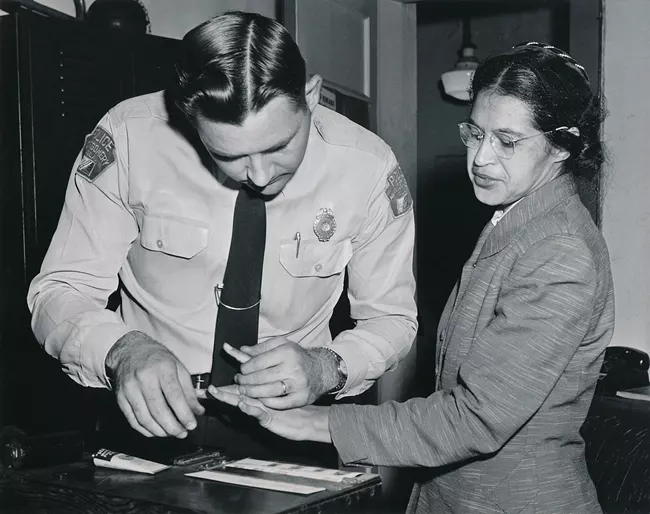There’s a little more to the story.
As we celebrate Rosa Parks‘ birthday, we revisit the narratives surrounding her undeniable role in the Civil Rights Movement and challenge misconceptions that have woven themselves into the fabric of history. Beyond the well-known story of a work-tired woman refusing to give up her seat on a Montgomery bus in 1955, Parks’ life was filled with activism that often gets overlooked. Here, we set the record straight for five things history gets wrong about Rosa Parks.
The Truth about Claudette Colvin
Contrary to the commonly-told story, Rosa Parks’s refusal to give up her bus seat on December 1, 1955, was not the first act of resistance of its kind. Today, Claudette Colvin’s story is being acknowledged as a precursor to Mrs. Parks’ actions on the Montgomery Bus, albeit with its own helping of fallacy. The commentary often diminishes Rosa Parks’ contributions as a show of privilege over Colvin. However, “movements often don’t happen with the first injustice but, rather, after an accumulation,” says Professor of Political Science at Brooklyn College, Jeanne Theoharis in a Washington Post article. A string of similar bus incidents–culminated with Rosa Parks’ actions–ignited the Montgomery Bus Boycott.
The Oversimplified Bus Incident
The narrative often oversimplifies Parks’s act of resistance on the bus. The incident wasn’t solely about refusing to give up her seat; it was the climax of her tireless efforts against racial injustice. Parks had put in work to overturn the unjust system of segregation and even founded the Committee for Equal Justice for Mrs. Recy Taylor. The incident on the bus was a catalyst that ignited a larger movement, marking the beginning of the Montgomery Bus Boycott.
The Singular Act of Defiance
While Parks’s defiance on the bus is widely celebrated, her activism extended beyond that singular event. She continued to fight for civil rights throughout her life. After the Montgomery Bus Boycott, Parks and her husband faced severe hardships, including threats and unemployment, due to their activism. Parks became a committed advocate for racial and social justice, working for the NAACP and embracing a broader spectrum of issues.
The “Quiet Seamstress” Stereotype
A common misrepresentation of Rosa Parks portrays her as a soft-spoken seamstress with no prior involvement in civil rights activism. In reality, Parks was a seasoned and dedicated activist who had been engaged in the struggle for decades. She was the secretary of the Montgomery chapter of the NAACP, working alongside influential civil rights leaders such as E.D. Nixon. In August 1955, she took an two-week workshop on school desegregation at Highlander Folk School in Tennessee, an interracial organizer-training school.
Her Sole Connection to Montgomery
While her name is forever tied to Montgomery, her impact extended far beyond that city. Parks eventually moved to Detroit, where she continued her activism. In Detroit, she worked on issues such as housing inequality and police brutality, emphasizing that the fight against injustice was not confined to a specific geographic location.
In separating fact from fiction, we gain a deeper understanding of Rosa Parks’s remarkable legacy. Because of her, we can!
Cover Photo: Rosa Parks’ life was filled with activism that often gets overlooked. Credit: Public Domain

